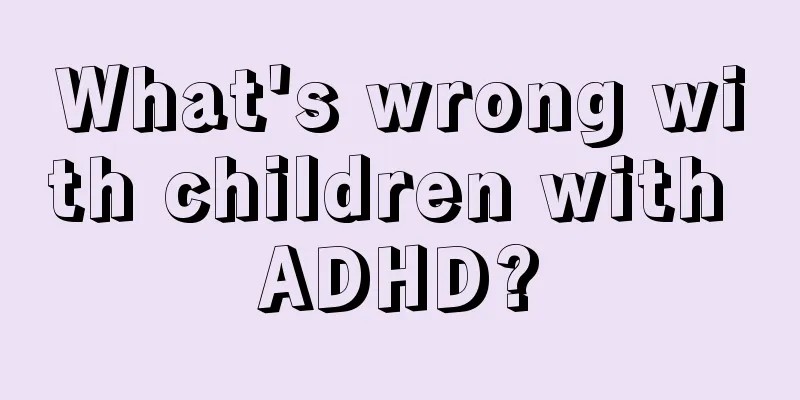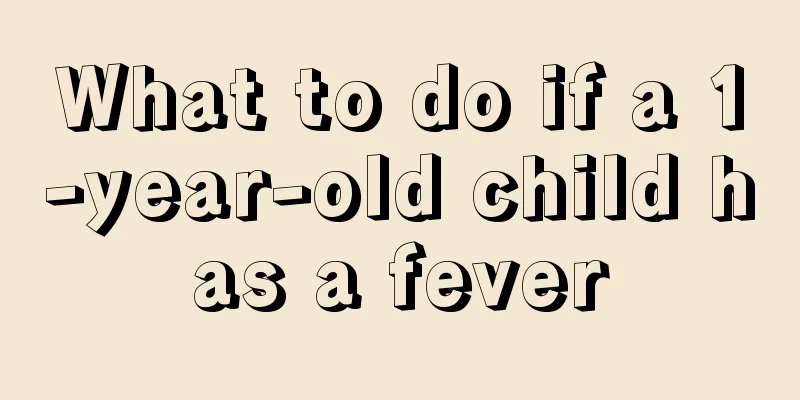What causes baby's eyes to turn purple?

|
If your baby's eyes are purple, you should pay attention to the cause of the disease, because we all know that many factors may cause some eye problems, and the harm to babies may be greater. The most common ones are trachoma conjunctivitis or epidemic keratoconjunctivitis. The prevention of these diseases should also be emphasized. Let them eat more foods high in calcium and vitamin C. 1. Trachoma : Trachoma is a disease caused by infection with Chlamydia trachomatis. When the disease occurs, the inside of the eyelid will become inflamed and become very red, and pus cells will grow. The conjunctiva of the eye will also be affected. If not treated in time, there is a risk of blindness. This disease is rare nowadays, but once it occurs, the child should receive treatment as soon as possible, and special towels and washbasins should be prepared for the child. 2. Conjunctivitis : Conjunctivitis is mostly caused by adenovirus infection, and can also be transmitted in swimming pools. When a child's cornea becomes inflamed and causes keratoconjunctivitis, unlike in adults, it is sometimes accompanied by a fever. Because this disease is highly contagious, towels and other items must be strictly separated. In addition, to prevent infection to others, children with the disease are prohibited from swimming and cannot go to kindergarten within 7 to 10 days. 3. Epidemic keratoconjunctivitis : When epidemic keratoconjunctivitis occurs, the eyelids suddenly swell and tear, and the conjunctiva also swells and becomes congested. Although there is not much eye mucus, there is a dull pain. The disease is mainly caused by infection with adenovirus type 8. The incubation period is 8 to 14 days. The preauricular lymph nodes are swollen, and infants and young children sometimes develop fever due to complications such as otitis media, tonsillitis, and indigestion. Because the disease is highly contagious, the child's supplies must be disinfected and treatment is timely, and it can be cured in a short period of time. 4. Calcium-containing foods : A diet deficient in calcium will cause increased neuromuscular excitability in young children, putting the eye muscles in a highly tense state, thereby increasing the pressure of the extraocular muscles on the eyeball, which can easily cause vision damage over time. Therefore, give your children more calcium-rich foods. Lean meat, milk, eggs, beans, fish and shrimp, kelp, vegetables, oranges, etc. are relatively rich in calcium. 5. Foods containing vitamin C : Vitamin C is one of the components of the lens of the eye. Lack of vitamin C can easily cause the lens to become cloudy, leading to cataracts. Give your children more foods containing vitamin C, such as various vegetables and fruits, among which green peppers, cucumbers, cauliflower, Chinese cabbage, fresh dates, and raw pears have the highest content. |
<<: Why does my baby always squint his eyes?
>>: What are the types of conjunctivitis in children?
Recommend
What should I do if my baby has a stuffy nose and can’t sleep well? 3 solutions
If the baby has nasal congestion when sleeping at...
Newborns sometimes have blank eyes.
Newborns are the apple of their parents' eyes...
What should I do if my two-year-old baby walks with his feet turned inward? Parents can do this!
When babies first start walking, they are very un...
Treatment of precocious puberty
Everyone hopes that their children can grow up he...
What causes baby's bones to crack?
Every parent hopes that their child can grow up h...
What should I do if my baby always has eye mucus?
The baby always has eye mucus. Mostly it’s becaus...
Ten-month-old baby's intelligence
Ten-month-old babies have left the neonatal perio...
How to treat bed-wetting in children and what medicine is good?
In daily life, many children have the problem of ...
What kind of food is good for babies with anemia?
Anemia in babies is very common in life. It is re...
What are the dangers of a child having a persistent low-grade fever?
During the change of seasons or when there is a l...
What should I do if my child falls?
The traditional way of education in China general...
How to dress a two-month-old baby in winter
The weather in winter is relatively cold. When th...
What is the effect of lumbar puncture on the growth of newborns?
Lumbar puncture is a common medical procedure tha...
How to protect children's teeth
In our daily life, we always see that many babies...
Treatment for blushing in children
Children's blushing often makes our parents a...









